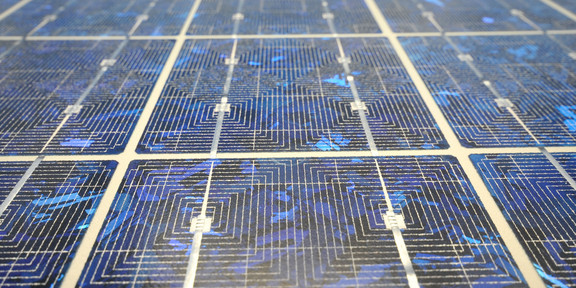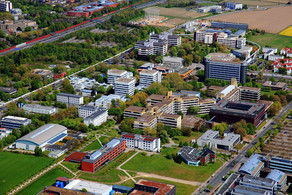Photovoltaic systems on TU roofs
- Projekte
- 7 Bezahlbare und saubere Energie

In 2021, TU Dortmund University installed a photovoltaic system on the roof of the experimental hall of the Institute of Machining Technology (ISF). This and other smaller PV systems currently generate around 54,500 kilowatt hours (kWh) of electricity - saving around 20,000 kilograms of CO2 compared to the average electricity mix in Germany in 2020. TU Dortmund's total electricity consumption is around 41 million kWh.
The majority of TU Dortmund University's buildings are not owned by the university, but belong to the state of NRW. These buildings are managed by the Bau- und Liegenschaftsbetrieb (BLB) NRW. The university is therefore usually only a tenant of the buildings. This peculiarity of ownership affects the rights and obligations as well as the area of responsibility of the contracting parties (landlord and tenant) in different ways, e.g. in the context of the duty of care or the duty to carry out repairs and renovations.
The maintenance obligations for rented buildings and roof areas, for example, are the responsibility of the landlord. In the event that the university now wants to independently install photovoltaic systems on the roofs of the buildings, the maintenance obligation for the roof surfaces would be transferred to TU Dortmund University and it would therefore have to pay for any damage to the roof in the future.
Due to the age of the roofs and the associated additional risk potential of future costs, the installation of photovoltaic systems on all roofs is not economically and legally possible for the TU Dortmund University at the present time, or can only be realised gradually in cooperation with the building owner BLB. However, a large roof area of a TU building is currently being equipped with PV systems as part of a model project that could be groundbreaking for the expansion of PV systems on existing buildings at universities in the state of North Rhine-Westphalia, in order to test the feasibility and risks of such projects.
However, criteria for climate-friendly building are already included in the planning standards of the BLB and the TU Dortmund, so that the implementation of PV systems is always examined in new buildings. As the state administration, BLB NRW has the goal of becoming climate-neutral by 2030 and is taking a leading role in the photovoltaic offensive of the state of NRW. This envisages an annual increase of at least one million kilowatt hours through photovoltaic electricity. Sustainability is thus also becoming an increasingly important topic at BLB.
For buildings owned by TU Dortmund University, a climate-friendly design of roof surfaces is taken into account. In the future, PV systems are specifically planned at the following locations:
- On the roof of the large day care centre (South Campus), which is currently being used.
- On the entire roof area of the sports extension building, which is currently being planned.
- The implementation of photovoltaic systems on the new building of the University Library is currently being examined.
In addition, TU Dortmund University is currently examining the retrofitting of photovoltaic systems on existing outdoor facilities and open spaces.




